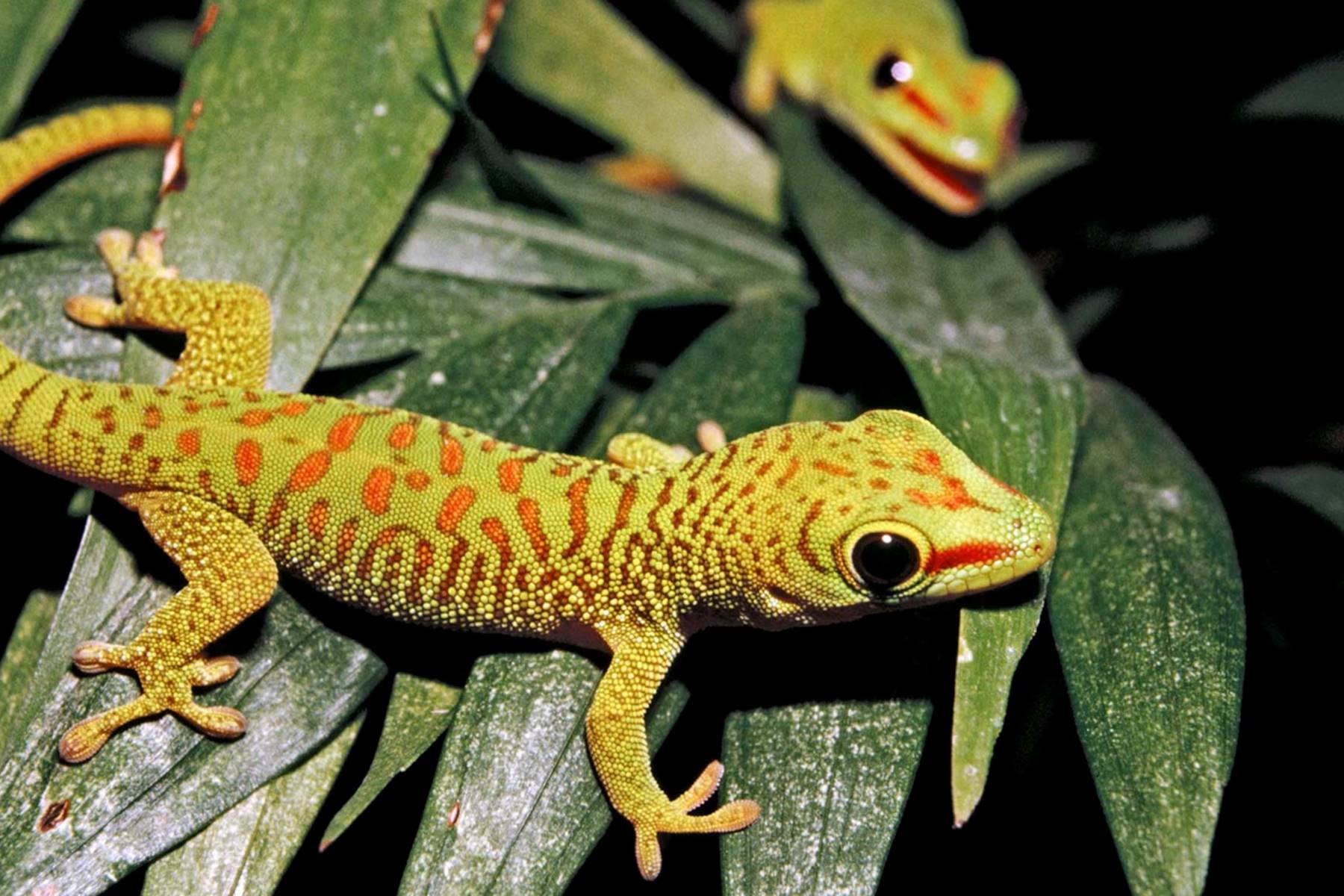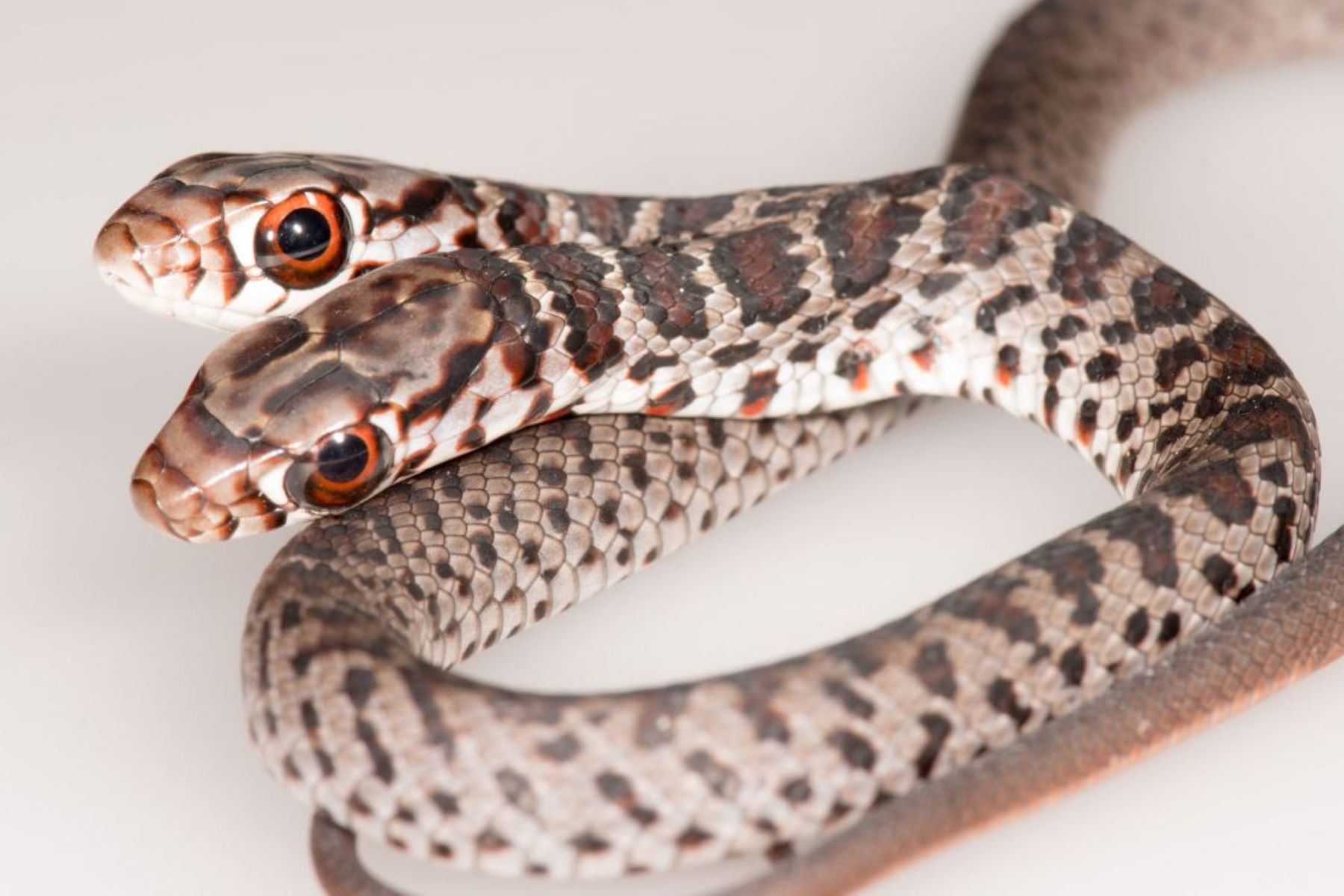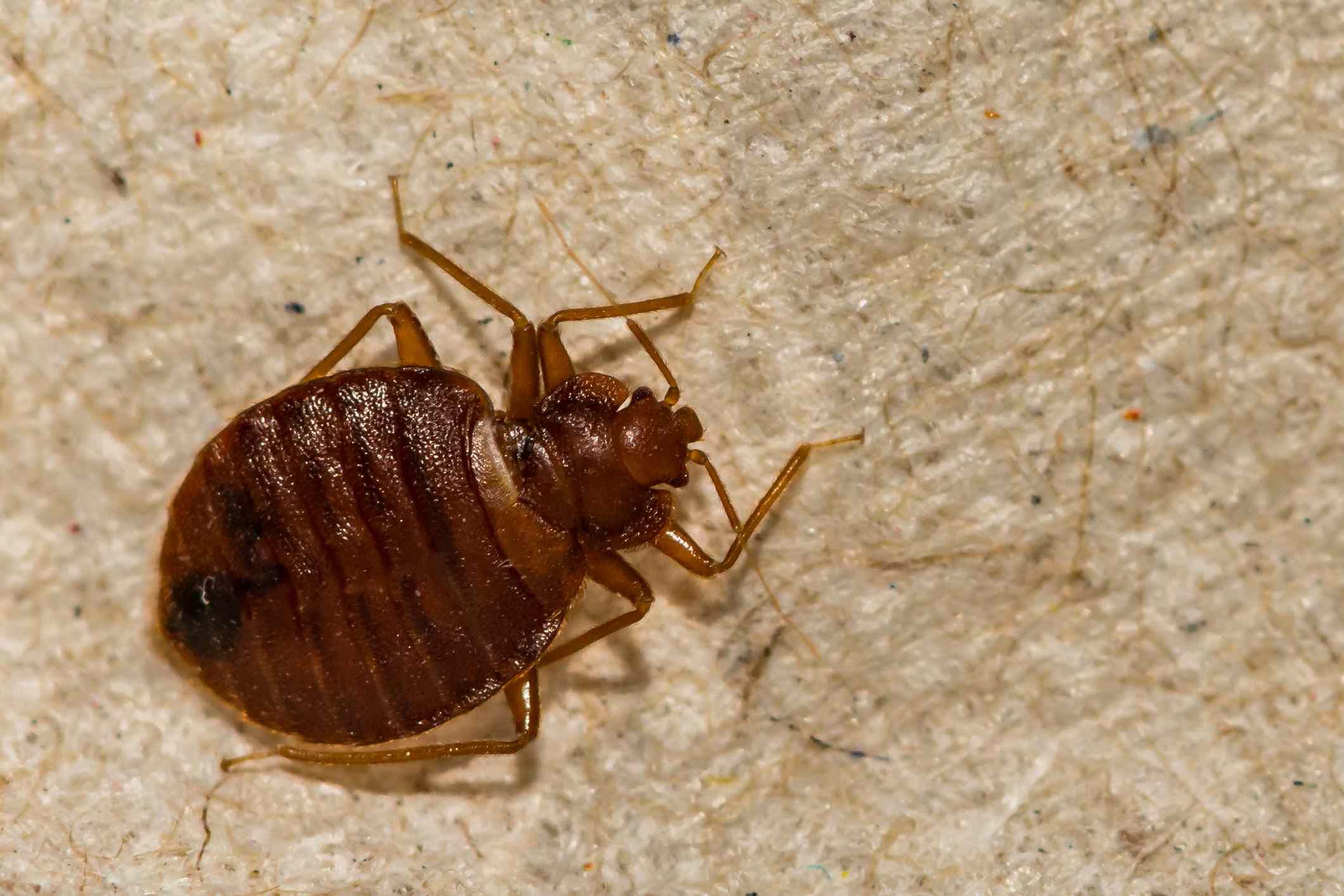Home>Pets & Animals>The Ultimate Guide To The Most Fascinating ‘G’ Animals!


Pets & Animals
The Ultimate Guide To The Most Fascinating ‘G’ Animals!
Published: February 17, 2024
Discover the most fascinating 'G' animals in this ultimate guide! From gentle giants to graceful gazelles, explore a diverse array of pets and animals.
(Many of the links in this article redirect to a specific reviewed product. Your purchase of these products through affiliate links helps to generate commission for Regretless.com, at no extra cost. Learn more)
Table of Contents
Introduction
Welcome to the captivating world of animals, where the diversity of life never ceases to amaze. In this ultimate guide, we will embark on a journey to explore some of the most fascinating creatures that begin with the letter 'G.' From the graceful giants of the savannah to the enigmatic reptiles lurking in the desert, each of these animals possesses unique traits and behaviors that make them truly remarkable.
As we delve into the lives of these 'G' animals, we will uncover the extraordinary adaptations that have enabled them to thrive in diverse ecosystems around the globe. From the towering giraffes that gracefully roam the African plains to the elusive gharials lurking beneath the waters of the Indian subcontinent, each of these animals offers a glimpse into the wonders of the natural world.
Throughout this guide, we will unravel the mysteries of the animal kingdom, shedding light on the behaviors, habitats, and survival strategies of these remarkable creatures. Whether you are a seasoned wildlife enthusiast or simply curious about the wonders of nature, join us as we embark on an adventure to discover the most captivating 'G' animals that inhabit our planet.
Giraffes
Giraffes, the gentle giants of the African savannah, are undoubtedly one of the most iconic and captivating creatures in the animal kingdom. With their long necks, distinctive coat patterns, and gracefully towering stature, giraffes are a sight to behold. These magnificent herbivores, known scientifically as Giraffa camelopardalis, are renowned for their unique physical attributes and fascinating behaviors.
Physical Characteristics
The most striking feature of giraffes is, of course, their elongated necks, which can reach incredible lengths of up to 6 feet. This remarkable adaptation allows them to feed on leaves and buds from the treetops, giving them access to a food source that is out of reach for many other herbivores. In addition to their long necks, giraffes also possess powerful muscular legs and a distinctive coat pattern consisting of irregular patches that range in color from light beige to rich chestnut. These patches, surrounded by white lines, act as a form of camouflage, helping giraffes blend in with the dappled light and shadows of their woodland habitats.
Behavior and Social Structure
Giraffes are generally peaceful animals, often seen gracefully strolling across the savannah in small groups known as towers. These towers typically consist of females and their young, while adult males may roam alone or form loose-knit bachelor herds. Despite their serene demeanor, giraffes are capable of delivering powerful kicks, which they use to defend themselves from predators or to establish dominance during male confrontations.
Habitat and Conservation
These majestic creatures are primarily found in the savannahs, grasslands, and open woodlands of sub-Saharan Africa. However, their populations have faced significant threats due to habitat loss, poaching, and human-wildlife conflict. Conservation efforts are crucial to safeguarding the future of giraffes, as they play a vital role in maintaining the ecological balance of their habitats.
Enduring Symbol of Grace and Elegance
In many cultures, giraffes symbolize grace, elegance, and a sense of tranquility. Their serene presence and distinctive appearance have captured the imagination of people around the world, making them a beloved symbol of the African wilderness.
Giraffes, with their unique adaptations and gentle nature, continue to inspire awe and wonder, reminding us of the boundless beauty and diversity of the natural world.
Gorillas
Gorillas, the largest and most enigmatic of the great apes, are revered for their immense strength, gentle demeanor, and striking resemblance to humans. These majestic primates, inhabiting the dense forests and mountainous regions of central Africa, belong to the genus Gorilla and are divided into two species: the eastern gorilla (Gorilla beringei) and the western gorilla (Gorilla gorilla). Within each species, there are distinct subspecies, each with its own unique traits and habitats.
Physical Characteristics
Gorillas are characterized by their robust build, broad chests, and muscular physiques, which enable them to navigate their forest habitats with ease. Adult males, known as silverbacks due to the distinctive silver-gray hair that develops on their backs with age, can weigh up to 400 pounds and stand over 5 feet tall when upright. Their imposing presence and commanding demeanor make them the undisputed leaders of their social groups, known as troops, which also consist of adult females and their offspring.
Social Structure and Behavior
Gorillas are highly social animals, exhibiting complex social structures and intricate communication through vocalizations, gestures, and body language. Within their troops, they form strong bonds through grooming, play, and mutual caretaking of the young. The cohesive nature of gorilla troops reflects the deep emotional connections and familial ties that bind these remarkable creatures together.
Habitat and Conservation
The habitats of gorillas vary depending on their species and subspecies. Western lowland gorillas inhabit the dense forests and swamps of central Africa, while the critically endangered mountain gorillas are found in the cloud forests of the Virunga Mountains and the Bwindi Impenetrable Forest. Despite their resilience, gorilla populations face significant threats from habitat loss, poaching, and disease. Conservation efforts, including protected reserves and community-based initiatives, are crucial for safeguarding the future of these magnificent creatures.
Enduring Symbol of Strength and Resilience
Gorillas symbolize strength, resilience, and the profound interconnectedness of all living beings. Their gentle nature and complex social dynamics offer a glimpse into the rich tapestry of life within the rainforests of Africa. As we strive to protect and preserve the habitats of gorillas, we honor their enduring legacy as guardians of the forest and ambassadors of the natural world.
Gorillas, with their remarkable intelligence and emotional depth, continue to inspire awe and reverence, serving as a poignant reminder of the intricate web of life that sustains our planet.
Gila Monsters
Gila Monsters, with their striking appearance and enigmatic nature, are among the most intriguing reptiles found in the deserts of the southwestern United States and northwestern Mexico. These venomous lizards, known scientifically as Heloderma suspectum, are renowned for their unique characteristics, captivating researchers and wildlife enthusiasts alike.
Physical Characteristics and Adaptations
The Gila Monster's appearance is characterized by its robust body, adorned with striking patterns of black and orange or pinkish scales. These bold colors serve as a warning to potential predators, signaling the Gila Monster's venomous nature. Unlike most lizards, Gila Monsters possess a venomous bite, delivering potent toxins through grooved teeth located in their lower jaws. This venom, while primarily used for subduing prey and self-defense, has also piqued the interest of scientists due to its potential medical applications.
In addition to their venomous defense mechanism, Gila Monsters have adapted to their arid environments by possessing specialized kidneys that enable them to extract moisture from their food, allowing them to survive in regions where water sources are scarce. Their ability to thrive in harsh desert conditions showcases the remarkable resilience and adaptability of these captivating reptiles.
Read more: The Ultimate Guide To The Safest And Most Affordable Compact SUV For Your Family Of Four!
Behaviors and Habitat
Gila Monsters are primarily solitary creatures, preferring the solitude of rocky outcrops, burrows, and desert scrublands. Their slow and deliberate movements reflect their energy-efficient lifestyle, as they conserve energy in the extreme heat of their desert habitats. While they are not agile runners, Gila Monsters are strong climbers and adept diggers, utilizing their sharp claws to excavate burrows and seek refuge from the scorching sun.
During the breeding season, male Gila Monsters engage in ritualistic combat to compete for mating opportunities, showcasing their territorial behavior and dominance displays. Female Gila Monsters lay their eggs in underground nests, where they carefully guard and protect their offspring until they hatch, demonstrating a rare display of maternal care in the reptile world.
Conservation and Misunderstandings
Despite their captivating allure, Gila Monsters face threats from habitat loss, road mortality, and illegal collection for the exotic pet trade. Additionally, they have been subject to misunderstandings and misconceptions, often falling victim to persecution due to their venomous reputation. Conservation efforts aimed at protecting their habitats and raising awareness about their ecological importance are essential for ensuring the survival of these remarkable reptiles.
In the vast and unforgiving deserts they call home, Gila Monsters stand as resilient symbols of adaptation and survival, embodying the unique beauty and diversity of the natural world. Their enigmatic presence serves as a testament to the intricate balance of life in some of the harshest environments on Earth.
Golden Eagles
Golden Eagles, with their majestic presence and awe-inspiring prowess, reign as one of the most revered raptors in the avian kingdom. These iconic birds of prey, scientifically known as Aquila chrysaetos, command the skies and rugged landscapes of the Northern Hemisphere with their keen eyesight, remarkable hunting abilities, and resolute demeanor.
Physical Characteristics and Adaptations
The Golden Eagle's formidable physique is a testament to its prowess as a formidable predator. With wingspans reaching up to 7.5 feet and body lengths of over 3 feet, these raptors possess impressive strength and agility, allowing them to soar effortlessly and reach astonishing speeds during their hunting pursuits. Their keen eyesight, estimated to be at least four times sharper than that of humans, enables them to spot prey from great distances, while their powerful talons and hooked beaks serve as formidable tools for capturing and dispatching their quarry.
In addition to their physical attributes, Golden Eagles have adapted to a diverse range of habitats, from mountainous regions and open steppes to arid deserts and coastal cliffs. Their adaptability and wide-ranging distribution reflect their resilience in the face of challenging environments, making them a symbol of wildness and untamed landscapes.
Behaviors and Hunting Strategies
Golden Eagles are renowned for their impressive hunting prowess, preying on a variety of animals, including small mammals, birds, and occasionally larger prey such as deer fawns and young ungulates. Their hunting techniques often involve stealthy approaches followed by swift and precise strikes, showcasing their mastery of aerial tactics and acute predatory instincts.
During courtship displays, these magnificent raptors engage in breathtaking aerial acrobatics, soaring high into the sky before engaging in dramatic dives and spiraling maneuvers. These displays not only serve as a means of courtship but also demonstrate the eagles' agility and strength, captivating observers and reaffirming their status as aerial marvels.
Conservation and Cultural Significance
Despite their formidable reputation, Golden Eagles face threats from habitat loss, human encroachment, and collisions with man-made structures such as power lines and wind turbines. Conservation efforts aimed at protecting their nesting sites and minimizing human-wildlife conflicts are crucial for ensuring the continued survival of these magnificent birds.
Throughout history, Golden Eagles have held profound cultural significance in various societies, symbolizing power, freedom, and spiritual significance. Their majestic presence in folklore, mythology, and indigenous traditions reflects the enduring impact they have had on human imagination and reverence for the natural world.
In the vast and untamed wilderness they call home, Golden Eagles stand as enduring symbols of strength, resilience, and the unyielding spirit of the natural world. Their regal bearing and remarkable abilities continue to captivate and inspire, reminding us of the boundless wonders that grace the skies and landscapes of our planet.
Green Sea Turtles
Green sea turtles, known for their graceful movements through the ocean's depths, are among the most iconic and beloved marine reptiles. Scientifically classified as Chelonia mydas, these remarkable creatures captivate the imagination with their vibrant greenish-colored skin, gentle demeanor, and extraordinary migratory behavior. As we delve into the world of green sea turtles, we uncover a wealth of fascinating insights into their lives, habitats, and the conservation efforts aimed at safeguarding their future.
Physical Characteristics and Adaptations
Green sea turtles are distinguished by their smooth, heart-shaped carapaces, or shells, which can reach lengths of up to 5 feet and weigh over 300 pounds. Their olive-green skin, from which they derive their name, serves as a form of camouflage, allowing them to blend seamlessly with the seagrass and algae-rich habitats they frequent. Their streamlined bodies and powerful flippers enable them to navigate the ocean currents with remarkable agility, while their uniquely adapted beaks facilitate the consumption of seagrasses, algae, and other marine vegetation.
Behaviors and Migratory Patterns
These captivating reptiles are renowned for their extensive migrations, with females traveling thousands of miles to return to the beaches where they hatched, a behavior known as natal homing. Once ashore, female green sea turtles dig nests in the sand, where they lay their eggs before returning to the ocean. The hatchlings, upon emerging from their nests, embark on a perilous journey to the sea, facing numerous predators and natural obstacles along the way.
Habitat and Conservation
Green sea turtles inhabit a wide range of marine environments, from coastal areas and coral reefs to open ocean waters. Despite their adaptability, they face significant threats from habitat degradation, pollution, entanglement in fishing gear, and poaching. Conservation initiatives, including protected marine reserves, nesting beach monitoring programs, and efforts to mitigate plastic pollution, are essential for ensuring the survival of these magnificent creatures.
Symbol of Resilience and Hope
In many cultures, green sea turtles symbolize longevity, resilience, and a deep connection to the ocean. Their presence serves as a poignant reminder of the delicate balance that sustains marine ecosystems and the urgent need to protect the world's oceans. By championing the conservation of green sea turtles and their habitats, we honor their enduring legacy as guardians of the sea and ambassadors of marine biodiversity.
In the vast expanse of the ocean, green sea turtles embody the enduring spirit of the natural world, inspiring awe and reverence as they gracefully navigate the waters that sustain life on our planet.
Gharials
Gharials, with their distinctive long and narrow snouts, are among the most fascinating and enigmatic inhabitants of the freshwater ecosystems in the Indian subcontinent. Scientifically known as Gavialis gangeticus, these remarkable reptiles are renowned for their specialized adaptations and unique ecological niche, making them a captivating subject of study and conservation efforts.
Physical Characteristics and Adaptations
The most striking feature of gharials is their elongated, slender snouts, which set them apart from other crocodilians. This specialized morphology is perfectly suited for their piscivorous diet, allowing them to swiftly and precisely capture fish in the swift-flowing rivers and murky waters they inhabit. In addition to their distinctive snouts, gharials possess a row of enlarged, interlocking teeth, which aid in securing their slippery prey, showcasing their remarkable evolutionary adaptations for piscine predation.
Furthermore, gharials have streamlined bodies and powerful tails, enabling them to navigate the strong currents of their riverine habitats with remarkable agility. Their olive-brown coloration and subtle patterns provide effective camouflage, allowing them to blend seamlessly with the sandy riverbanks and submerged vegetation, further enhancing their hunting prowess and evasive capabilities.
Read more: The Ultimate Guide To The Safest And Most Affordable Compact SUV For Your Family Of Four!
Behaviors and Habitat
Gharials are primarily aquatic, spending much of their lives in the water, where they are well-equipped for swift and agile movements. They are highly specialized for an aquatic lifestyle, with webbed feet and valve-like nostrils that close underwater, allowing them to remain submerged for extended periods while hunting for their preferred prey.
These magnificent reptiles are primarily found in the rivers of the Indian subcontinent, with a particular stronghold in the Ganges, Brahmaputra, and Indus river systems. They prefer deep, fast-flowing rivers with sandy banks, where they can bask in the sun and nest in the sandy riverbanks, ensuring the survival of future generations.
Conservation and Challenges
Despite their remarkable adaptations, gharials face significant threats from habitat loss, water pollution, unsustainable fishing practices, and accidental entanglement in fishing gear. Furthermore, the construction of dams and riverine infrastructure has fragmented their habitats, posing additional challenges to their survival.
Conservation efforts, including habitat restoration, captive breeding programs, and community-based initiatives, are crucial for safeguarding the future of gharials. By raising awareness about their ecological importance and advocating for the protection of their riverine habitats, conservationists and wildlife enthusiasts strive to ensure that these magnificent reptiles continue to thrive in the freshwater ecosystems they call home.
In the meandering rivers and sandy banks of the Indian subcontinent, gharials stand as enduring symbols of adaptation and resilience, embodying the unique beauty and ecological diversity of freshwater habitats. Their presence serves as a poignant reminder of the intricate balance that sustains the fragile ecosystems they inhabit, inspiring efforts to protect and preserve the natural heritage they represent.
Conclusion
In the realm of the animal kingdom, the 'G' animals we have encountered in this ultimate guide have offered a captivating glimpse into the diverse tapestry of life on our planet. From the graceful giraffes that roam the African savannah to the enigmatic gharials lurking in the rivers of the Indian subcontinent, each of these creatures embodies the remarkable adaptations and behaviors that have allowed them to thrive in their respective habitats.
As we reflect on our journey through the lives of giraffes, gorillas, gila monsters, golden eagles, green sea turtles, and gharials, we are reminded of the profound interconnectedness of all living beings. These animals, with their unique traits and ecological roles, serve as poignant reminders of the intricate web of life that sustains our planet's ecosystems.
Furthermore, our exploration has shed light on the conservation challenges facing these remarkable creatures. From habitat loss and human-wildlife conflict to the impacts of climate change and unsustainable practices, the 'G' animals confront a myriad of threats that jeopardize their survival. However, amidst these challenges, there is hope. Conservation efforts, community engagement, and awareness initiatives play a pivotal role in safeguarding the future of these magnificent creatures.
By championing the conservation of these 'G' animals and their habitats, we honor their enduring legacy as guardians of the natural world. Their presence serves as a poignant reminder of the delicate balance that sustains our planet's ecosystems and the urgent need to protect the world's biodiversity.
As we bid farewell to the captivating world of 'G' animals, let us carry forward the awe and reverence they have inspired within us. Let us become stewards of the natural world, advocating for the protection of wildlife and the preservation of their habitats. In doing so, we ensure that future generations will continue to marvel at the grace of giraffes, the strength of gorillas, the resilience of gila monsters, the majesty of golden eagles, the serenity of green sea turtles, and the adaptability of gharials.
May the wonders of the animal kingdom continue to ignite our curiosity, deepen our appreciation for the natural world, and inspire us to cherish and protect the remarkable creatures that share our planet.









